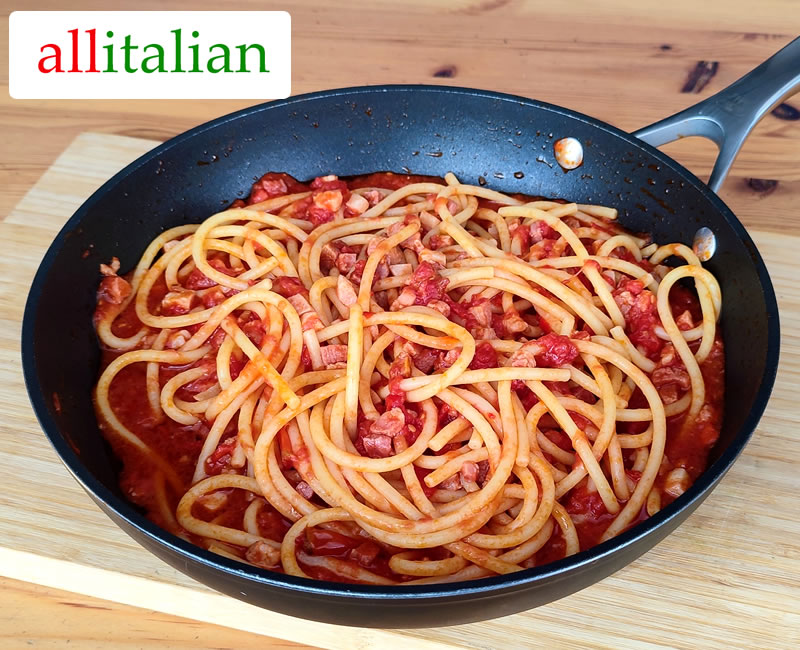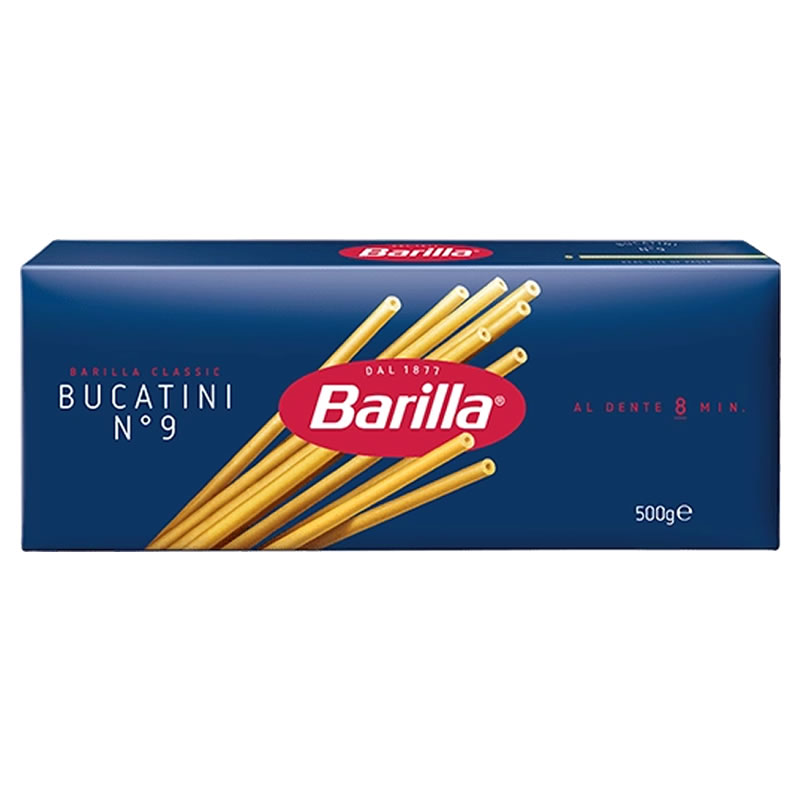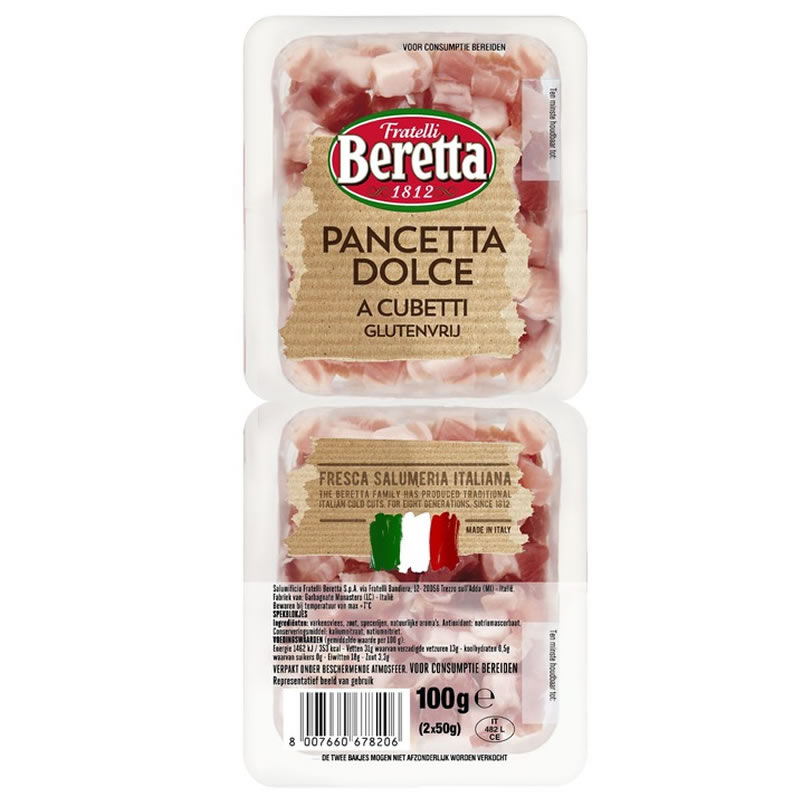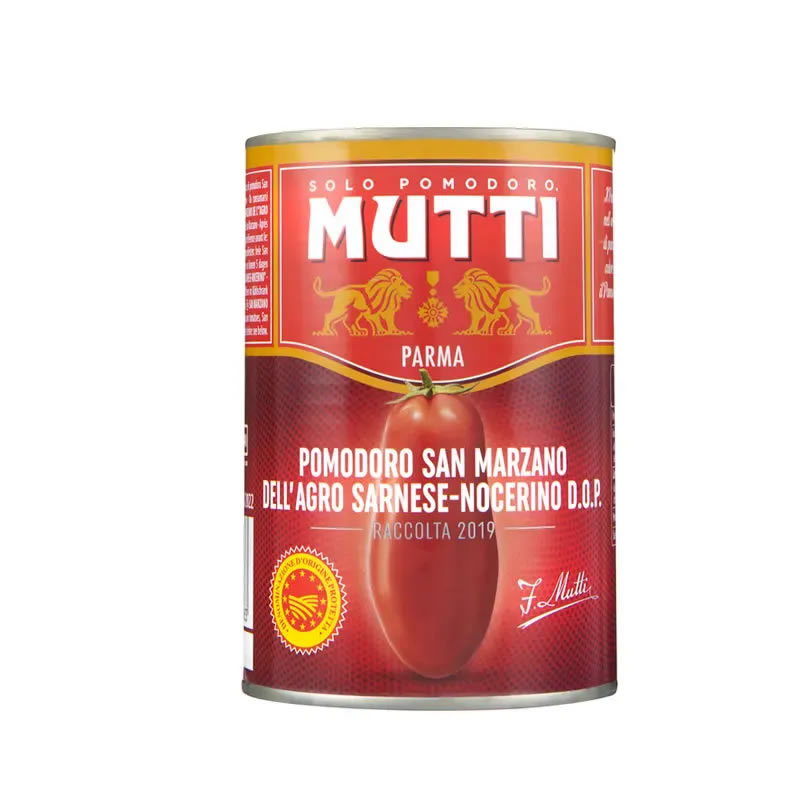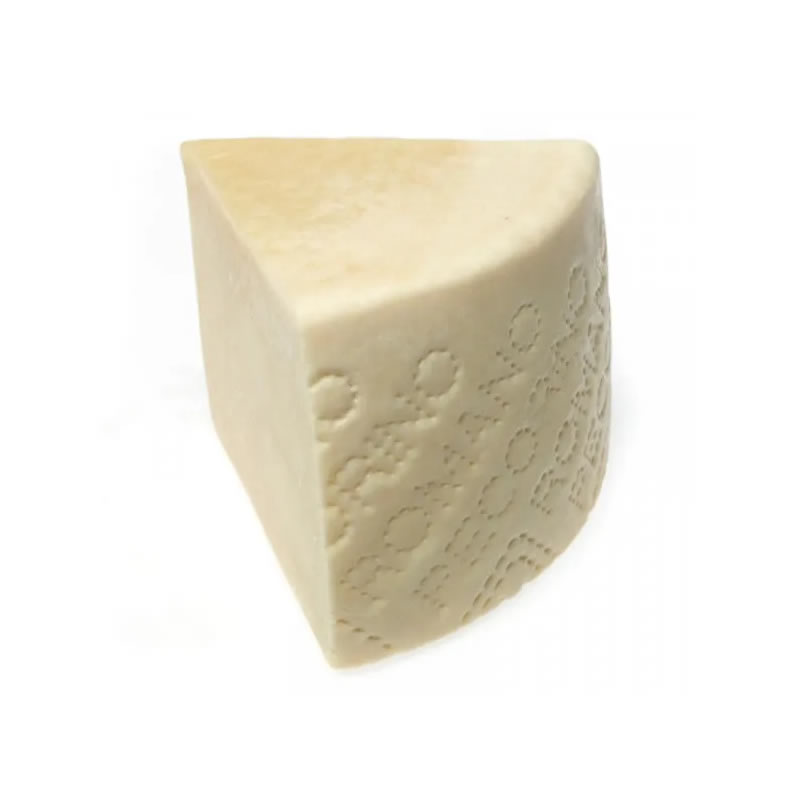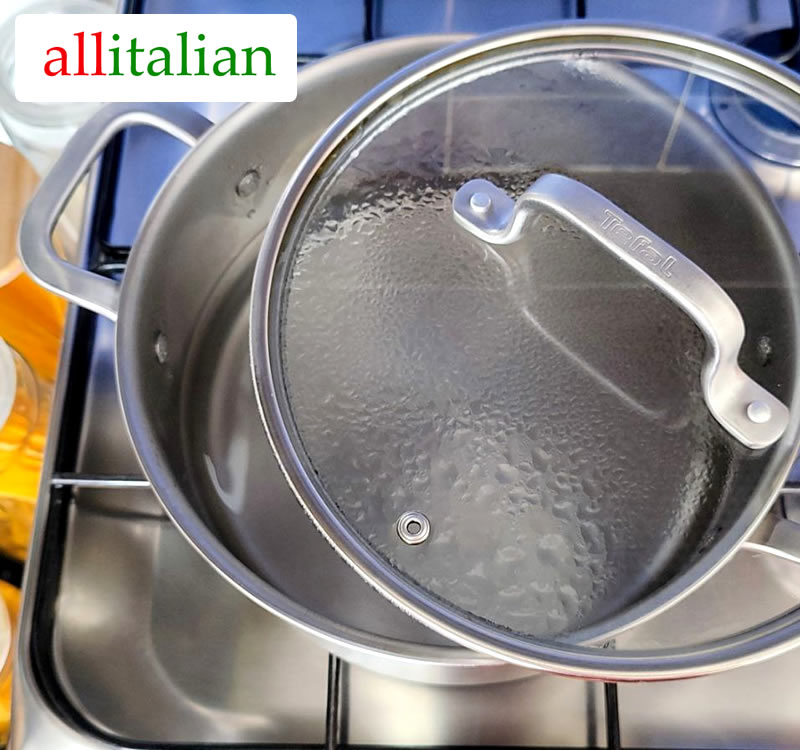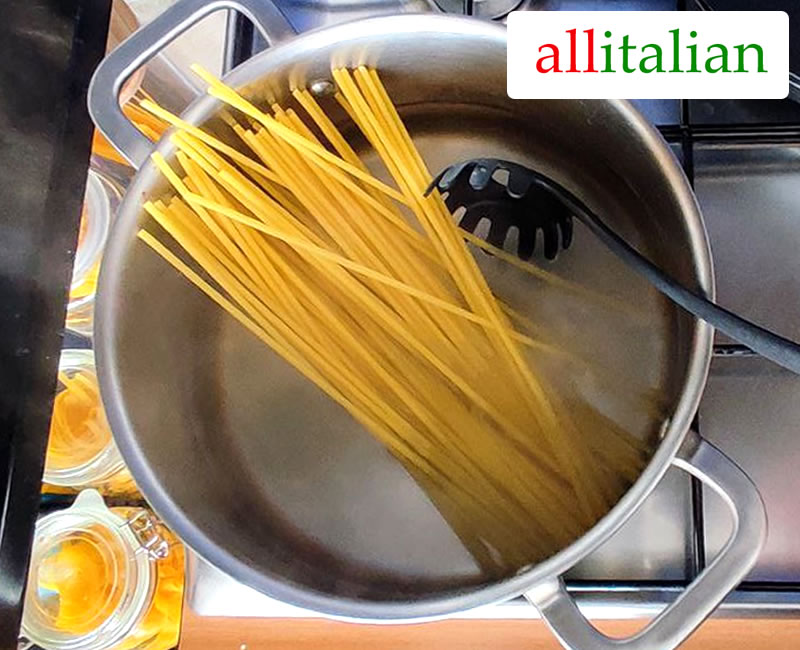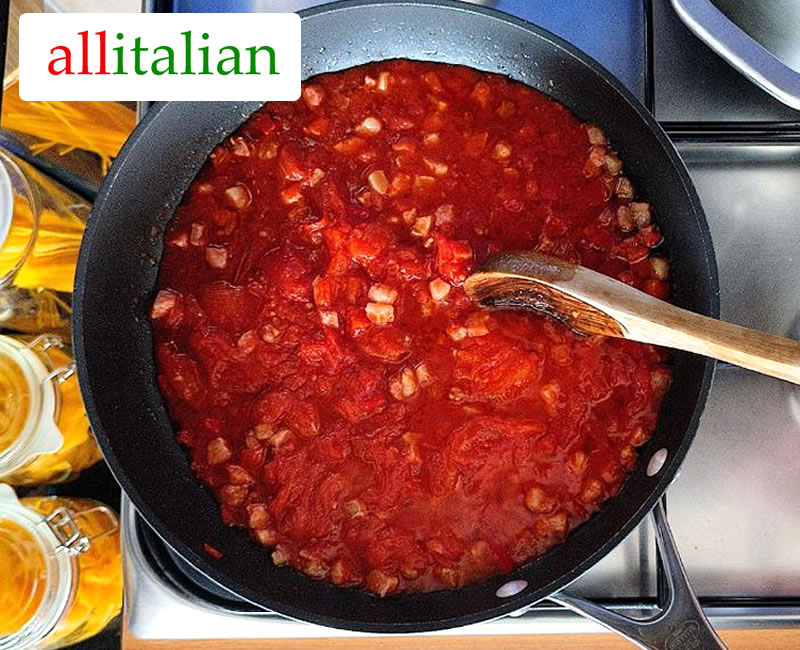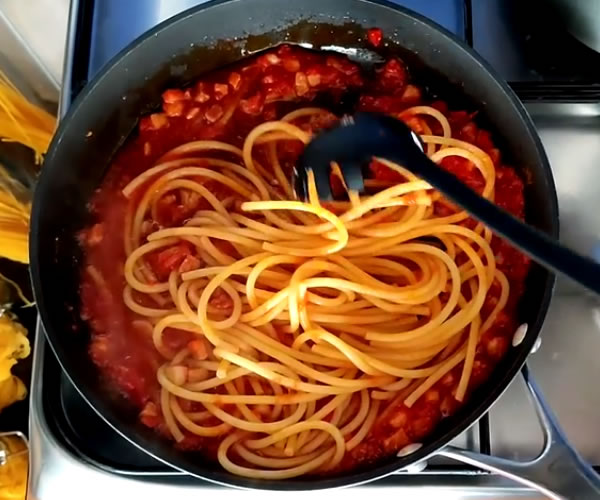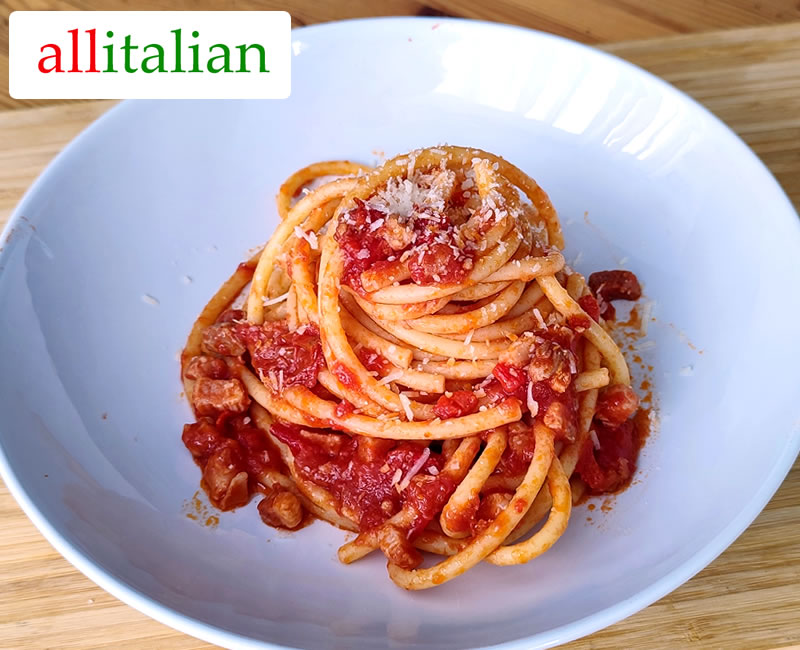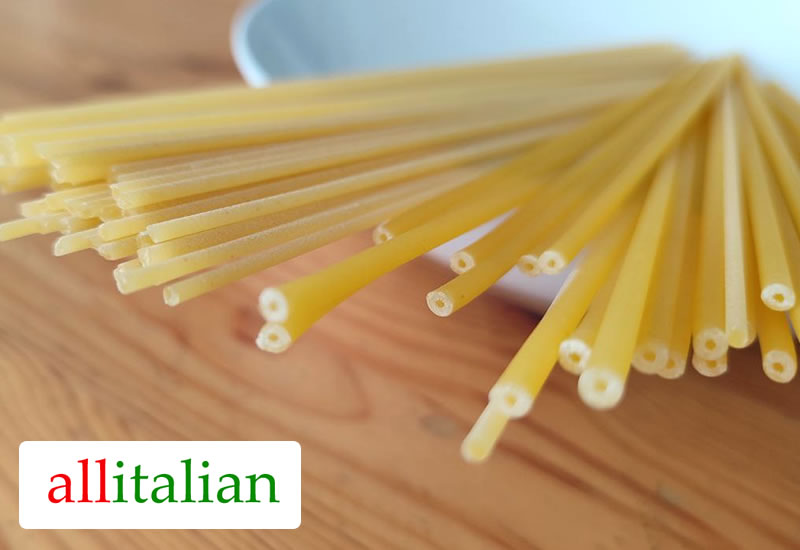-
Fry the pancetta
For the Amatriciana sauce, use a large frying pan: it must contain both the sauce and, at the end of the preparation, the bucatini.
Pour the olive oil into the pan and heat over high heat. When the oil is hot, add the pancetta blocks.
Fry the pancetta for a few minutes, so that the fat from the pancetta melts into the olive oil.
Add a dash of white wine to give pancetta more flavor.
Also add the finely chopped chilli pepper and fry for a couple more minutes.
-
Add the tomatoes
Break up the tomato pulp and add it to the pan.
Mix thoroughly and turn the heat to low; season with salt and pepper and leave the sauce to boil. Cover the pan with the lid to preserve all the aroma of the tomato.
-
Fill a pot with water and bring it to a boil
Pour cold water into a pot; just under a liter of water per serving is sufficient.
Warm up the water over medium heat and cover the pot with its lid to boil the water first.
-
Add the salt and the bucatini
Is the pasta water boiling? It's time to add the coarse salt.
As soon as you add the salt, the water stops boiling for a little while.
When the water boils again, put the bucatini.
👉 Don't break the bucatini: after putting them in the water, mix them for a few seconds with a spaghetti spoon; that way they don't stick.
-
Check the cooking status of the bucatini
While the pasta is cooking, keep the tomato sauce warm over very low heat. If the sauce gets too dry, dilute it with half a ladle of salted pasta water.
After a few minutes, check the cooking state of the pasta: the best method is to taste it to make sure it is al dente.
-
Combine bucatini and sauce
Two minutes before the bucatini are al dente, if they are still a little raw, scoop them up with a spaghetti spoon and put them in the sauce.
Add another half ladle of pasta water to make the sauce creamier.
Mix the bucatini and sauce well and continue to cook until the pasta is cooked.
-
Serving
Add a pinch of grated Pecorino Romano cheese and serve.
A tip: when Italians eat bucatini all'Amatriciana, they never wear white clothes. Due to the special shape of the bucatini, as you roll it around a fork, the sauce contained in the pasta jumps in all directions.

